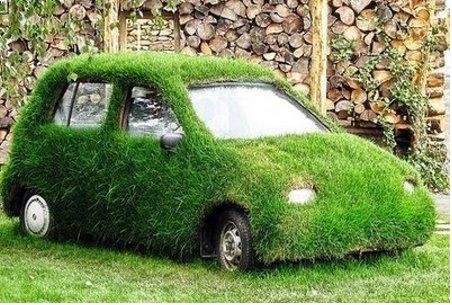
What does and does not go into the recycling truck can sometimes be a little confusing. Some people err on the side of overdoing, throwing everything that seems remotely recyclable into the bin. But I hate to tell them, that’s can sometimes win the entire contents of the bin a one-way trip to the dump. Other people err on the side of under doing, and don’t bother to recycle at all. I’m assuming, if you’re reading this, that you probably recycle, but do you know what can and can’t be recycled? It pays to check your city or town’s web site to see if there’s anything they specifically do and do not take, but until you do, here’s a quick list of seven things most curbside recycling programs won’t take:
Paper Food Containers
It doesn’t matter if that pizza box hardly has a drop of cheese on it or if the Chinese food container held nothing more insidious than white rice, putting them in the recycling bin is a no-no. Oil from food can contaminate an entire batch of cardboard, making it impossible to process into new clean paper. The same goes for paper plates and napkins, and any other paper with food yuck on it.
Foiled, Glossy, Glazed, Waxed, Glassine, and Lacquer Coated Containers
Some items look recyclable because they’re cardboard or paper on the outside, but lurking inside you have foil, wax, plastic, and other stuff that can’t be separated from the paper. Think juice boxes, waxed paper bags, chips bags, and candy wrappers. Basically, anything made from blended material needs to stay out of the bin. Even sorting it out at the center is difficult because lightweight stuff like fruit snacks wrappers will stick to actual recyclables.
Plastic Bottle Caps
Surprised? I was. Bottle caps – soda and water bottle caps, peanut butter jar lids, detergent caps, etc. – are frequently made of polypropylene, i.e., plastic #5, which most recycling centers will not take. When in doubt, though, look for the recycling number on the inside of the cap because some will be recyclable. The good news is that if your street pick-up doesn’t take caps, there might be a recycling center nearby you can bring them to.
Polystyrene and Packing Peanuts
The only time I’ve ever gotten a note from the recycling guys was when I put a whole bag of styrofoam in with the recyclables because The Beard was convinced that they’d take it. Turns out, they don’t. While polystyrene plastics are, like all plastics, recyclable, it’s pretty unusual to live in town that will collect it for recycling because recycling polystyrene is time consuming and expensive so no one wants to do it.
Plastic Bags
Again, surprise! A lot of people put their plastic and glass recyclables in plastic bags before putting them in the bins, but apparently this is a one-way ticket to getting your carefully washed recyclables tossed in the trash. So don’t put your plastic and glass in plastic bags before putting them in the bin, and bring your plastic bags to the supermarket if yours happens to accept plastic bag turn-ins (which is getting more common).
Wire Hangers and Metal Wire
Turns out that a lot of recycling centers aren’t set up to deal with wire, even if they have not problems processing other metals. Instead of placing wire hangers in the recycle bin or tossing them, stop by the closest dry cleaners and see if they have a return program. Those that accept wire hangers will usually sell them for scrap, but at least you know they’ll get recycled.
Shredded Paper and Heavily-Dyed Paper
Weird, no? But true! Shredded paper is usually accepted at drop-off recycling centers, but not for curbside pick-up because it takes up a lot of space, it’s more difficult to sort and recycle, and it can end up producing a lower quality of recycled paper. Heavily-dyed paper can bleed into batches of recycled paper, making it impossible to get a nice clean pile of new paper.







